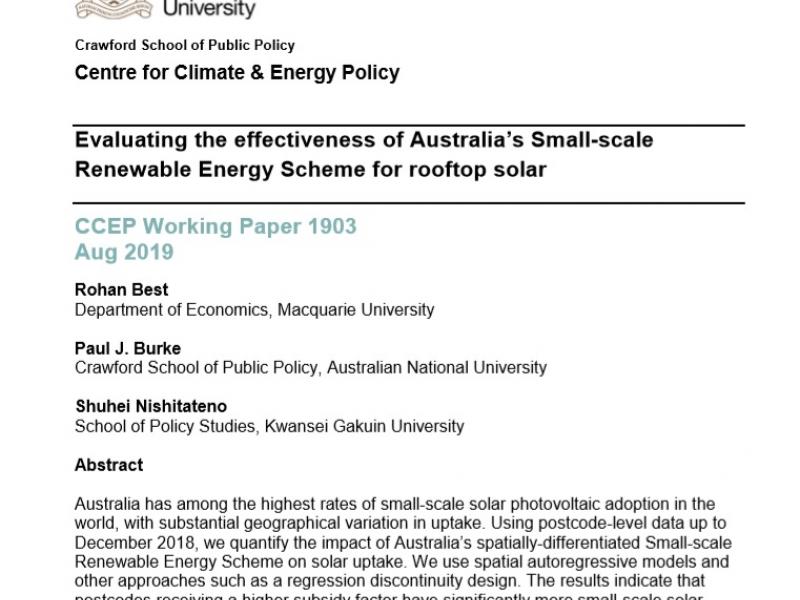Evaluating the effectiveness of Australia’s Small-scale Renewable Energy Scheme for rooftop solar

Australia has among the highest rates of small-scale solar photovoltaic adoption in the world, with substantial geographical variation in uptake. Using postcode-level data up to
December 2018, we quantify the impact of Australia’s spatially-differentiated Small-scale Renewable Energy Scheme on solar uptake. We use spatial autoregressive models and other approaches such as a regression discontinuity design. The results indicate that postcodes receiving a higher subsidy factor have significantly more small-scale solar
installations, after controlling for solar exposure and spatial patterns in the data. The subsidy elasticity of small-scale solar capacity installations during 2018 was around 1.2. We use this estimate to calculate that an increase in the subsidy flowing to new installations would be able to reduce carbon dioxide emissions at a subsidy cost of around US$36 per tonne, depending on assumptions.
Best, R., Burke, PJ. and Nishitateno, S. (2019), Evaluating the effectiveness of Australia’s Small-scale Renewable Energy Scheme for rooftop solar, CCEP Working Paper 1903, Aug 2019. Crawford School of Public Policy, The Australian National University.


